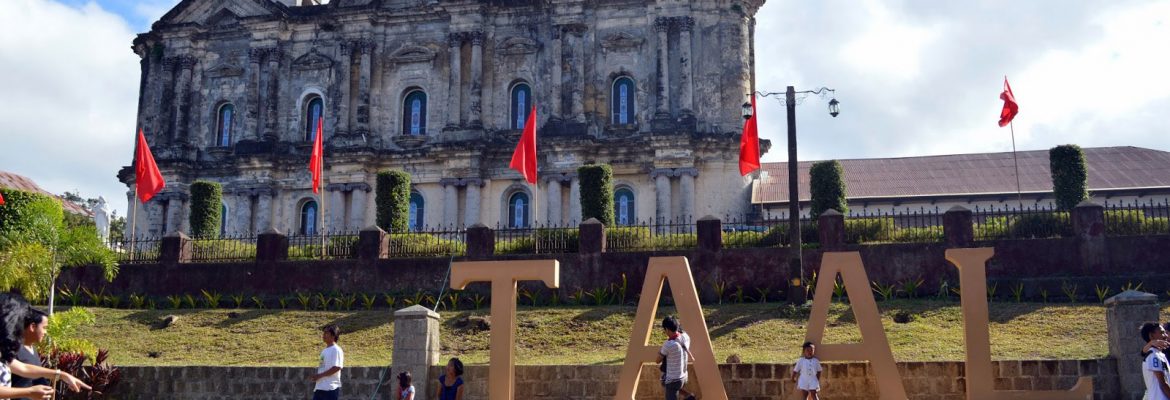The Heritage Town of Taal, Batangas, Southern Luzon, Philippines
Terra cotta and Chinese potteries excavated from the banks of the Pansipit River indicate that the Chinese have been trading with the natives along its banks from the Yuan Dynasty until the early Ming Dynasty from the 13th to the 15th century.
It is also believed that the Malay Datu Puti who led ten datus for an expedition into Panay from Borneo and Brunei in the late 13th century also established the 1st settlement along the Pansipit river leaving behind Datus Dumangsil and Balensusa in two barangays around Taal Lake. In 1571 Spanish Generals Martin de Goiti and Juan de Salcedo, nephew of the conquistador Miguel Lopez de Legaspi sailed up the Pansipit river to the mouth of Taal lake, but, the natives unsure of the intentions of the Spaniards fought with bows, arrows and bolos and hit Salcedo in the thigh with a poisoned arrow.
In 1572 Fray Diego Espinas, serving as both priest and Capitan, founded Taal, which was then located along the coast at Balangon. When the Moros destroyed the town in 1575, Fray Espinas transferred the population to the bank of the lake where San Nicolas now stands.
Ships coming from Manila and Visayas brought trade which made the town so prosperous. In 1581, with Taal as its capital, the province of Batangas was founded which originally covered southeast Laguna, parts of Camarines, Mindoro and Marinduque. From 1597 to 1732, Balayan was designated as the capital of the province. In 1732 Taal was again made the capital of the province of Batangas.
However, Taal volcano’s most violent eruption on August 11, 1749 completely devastated the town. In 1754, the town once again moved to its present location overlooking Balayan Bay where the shrine of Caysasay was originally located. It was also at this time that the provincial capital was moved to its present location of Batangas City. In 1861, Taal was divided into three (3) towns: San Genaro (what is now Lemery), San Luis and present day Taal.
Taal’s name has been translated as “native”, “real”, or “true” to Bornean settlers. Some old folks believe that the name originated from the wild palm trees on the shores of the lake and along the banks of the Pansipit River known as Tal-an, while others believe it was derived from Ta-ad, an old Batangueño term for sugar cane points.
A robust coffee trade became the money pot of the town in the last half of the 19th century which gave rise to a wealthy merchant class. Thus, there was a boom in the construction of grand houses made of adobe stone (bahay na bato) and other more imposing facades as the Basilica of San Martin de Tours.
The town’s progress was interspersed with calamities: small pox epidemic (1761/1774), locust invasion (1804/1819) cholera epidemic (1820), great fires (1825/1841) and earthquakes brought by volcano eruptions (1852 which toppled the altar of the church and the two towers of Caysasay church).
Although Taaleños were prominently involved in the rebellion to gain independence against Spain from 1896-1898, the town itself remained intact. On February 4, 1899 the Filipino-American War erupted and Taal suffered greatly under the hands of the Americans who put up a garrison in the convent and later burned Taal from the poblacion to the suburbs. Pandayan district which prided itself with expert loom weavers and Cuta, then referred to as the Escolta of Taal, were razed to the ground. It is a miracle that some of the houses which define Taal as heritage town today were saved.
Visit Philippines. Epic Philippines Adventure Route © All Rights Reserved | Monika & Simon Newbound 2017


